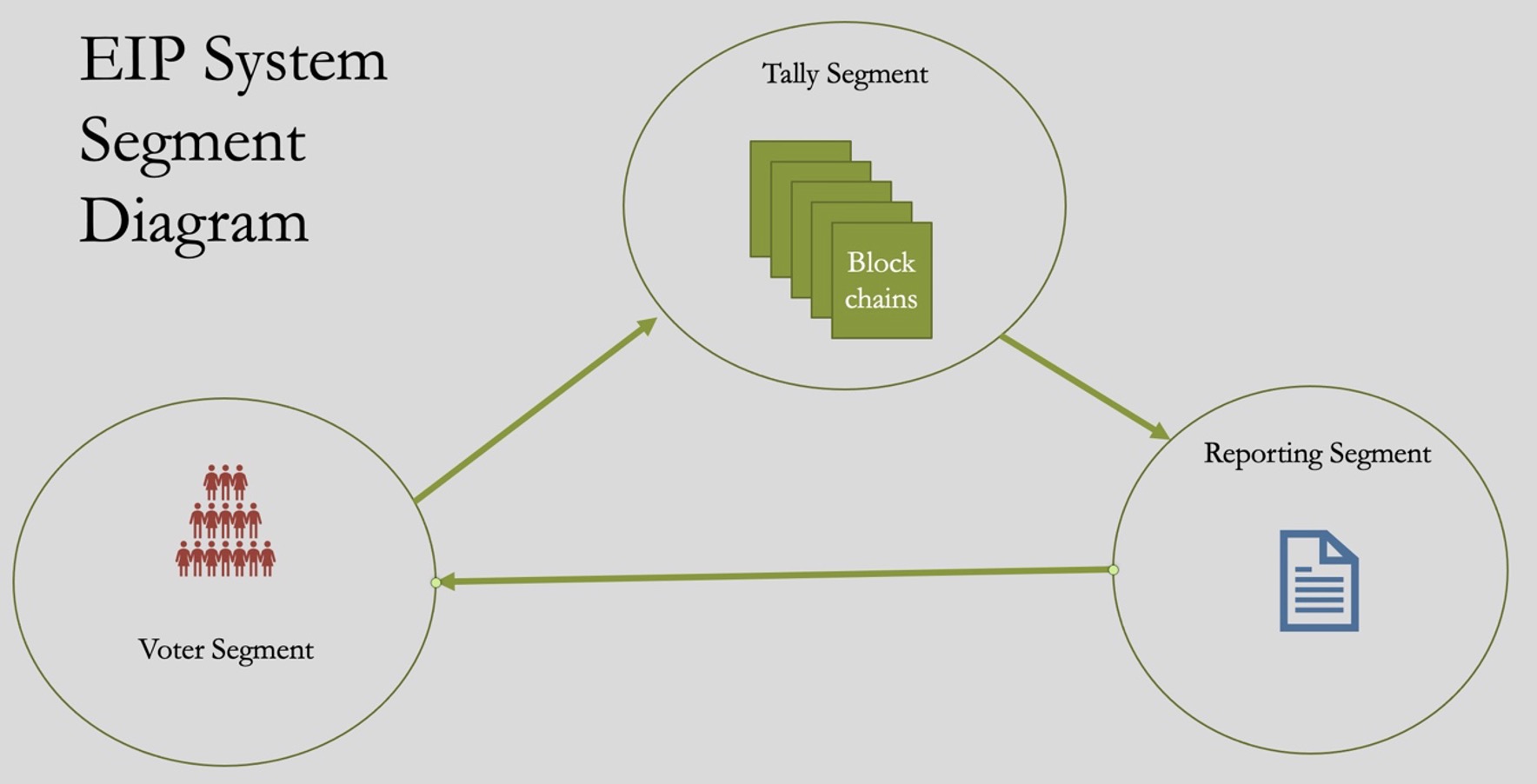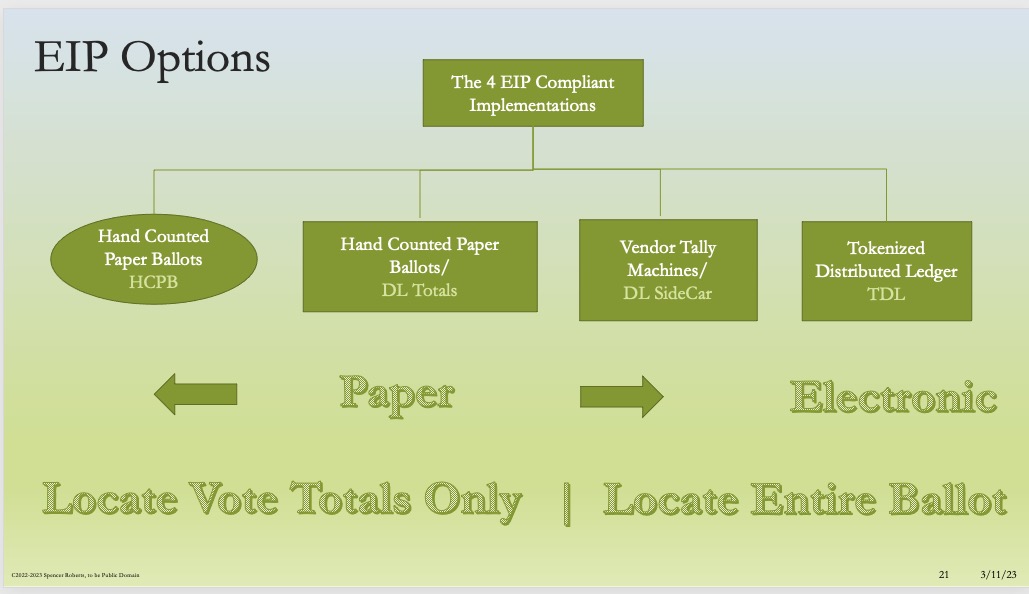In systems engineering terms, EIP can be thought of as implying a system of systems. Although it’s not complicated as other larger systems, it’s helpful to break the problem space of Elections down into segments to make it easier to understand and to implement. At the highest level, systems engineers refer to a System Segment Diagram

We identify three segments in the Election problem space:
· Voter Segment – where votes are cast as the voter interacts with the election system
· Tally Segment – where votes are tallied, and data is made available
· Reporting Segment – where data is received from the Tally Segment and made available for dissemination
Architectural Implementation Options
People everywhere are encouraged to build EIP-compliant systems of their own. All they have to do is comply with the system specifications and get certified. Alternatively, systems may be available at little to no cost, purchased or subscribed to in the open marketplace.
So, what exactly is an EIP-compliant system?
It’s an EIP-certified system that falls into one of the four architectural categories that implement the EIP protocol. These are
· Hand counted paper ballots (HCPB)
· Hand counted paper ballots augmented with a distributed totals ledger (DL Totals)
· Vendor machines augmented with a distributed ledger sidecar (DL Sidecar), and finally a
· Tokenized distributed ledger (TDL)

Manual Tallies
The non-electronic option of the protocol (HCPB) will require certification of all of the manual election activities. Without proper direct observation in place, even this tried and true process can produce onerous results. In the past, this has been the sole responsibility of election officials, most times operating with little, ineffective, or no oversight at all. This short-sighted practice of "outsourcing" the people's right to oversee elections violates the consensus model specified in EIP, which requires maximum meaningful objective observation from opposing parties.
Electronic Tallies
Imagine being able to retrieve your actual ballot and visually inspect it for accuracy immediately after you vote! That's what 2 of the 3 remaining options (the electronic options of the protocol) offer. The third will offer tallies only, but even that is more transparent than any election system available today. All of these electronic architectural options will require the production and certification of EIP-compliant systems. These are primarily software systems that implement the EIP protocol, particularly when it applies to the distributed ledger, voting and tallying capabilities. But there’s also a need for user-facing systems that accept voter input and disseminate output (reporting).
Take your Pick
Every jurisdiction is not in the same place financially or even according to preference. EIP supports all circumstances so communities can pick the option that suits them best. In terms of election results, they will all have the same outcome.
The only real difference among the option capabilities is that in order to track and verify your own ballot as well as vote totals, you must use DL SideCar or better yet, TDL. If that's not important, use either HCPB or HCPB/DL Totals (where you can see and track only vote totals)